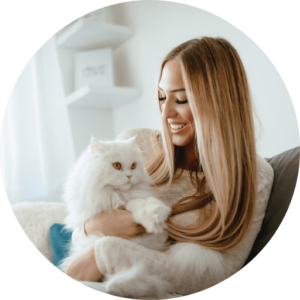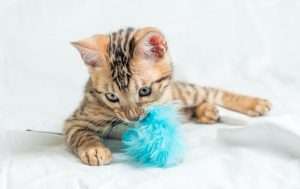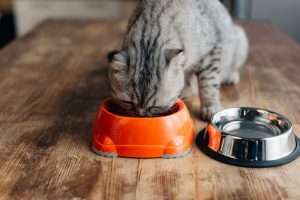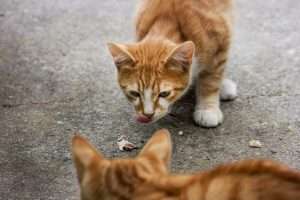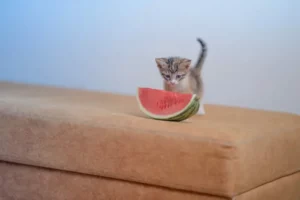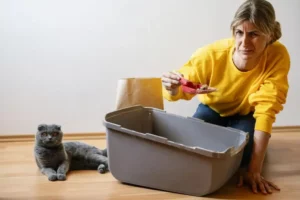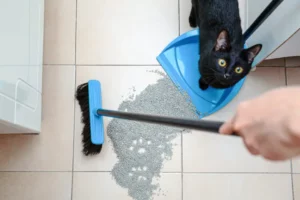Table of Contents
Can Cats Eat Whipped Cream? As cat owners, we often want to treat our feline friends to special treats or snacks, like whipped cream. While we may love indulging in whipped cream, it’s important to consider if it’s safe for our cats to eat. As obligate carnivores, cats have specific nutritional needs that should be met through a balanced diet. In this article, we will explore whether or not cats can eat whipped cream and the potential risks and benefits. We’ll also discuss some alternative treats and snacks that are safe for feline consumption.
Nutritional Value of Whipped Cream for Cats
Whipped cream is a popular dessert topping that is loved by many humans. However, it is important to note that whipped cream is not a healthy addition to a cat’s diet. Whipped cream is typically made with high-fat dairy products such as heavy cream, which can be harmful to cats in large quantities. In this section, we will discuss the nutritional value of whipped cream for cats and why it is not a recommended addition to their diet.
Whipped cream is high in both fat and sugar, which can cause a variety of health issues for cats. The high-fat content in whipped cream can lead to weight gain and obesity, which can put cats at risk for several health problems, such as diabetes, heart disease, and arthritis. Additionally, the high sugar content in whipped cream can cause digestive issues, such as diarrhea and vomiting.
It is important to note that cats have a different digestive system than humans and are not able to process certain foods in the same way. While small amounts of whipped cream may not cause harm, it is not recommended as a regular addition to a cat’s diet.
In conclusion, the nutritional value of whipped cream for cats is low, and the potential negative effects of feeding it to cats outweigh any potential benefits. It is important to provide cats with a balanced diet that meets their nutritional needs and to avoid feeding them unhealthy human foods like whipped cream.
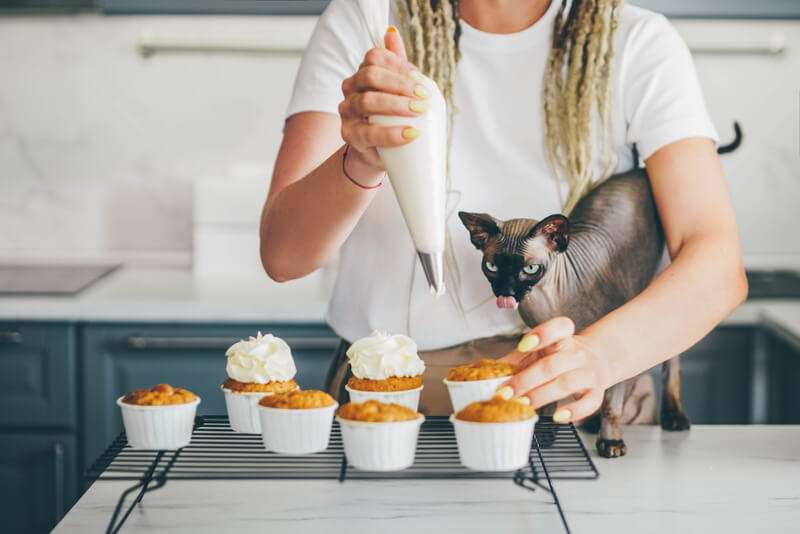
Can Cats Eat Whipped Cream?
Whipped cream is a popular topping for many desserts, but can cats eat whipped cream? While it may seem harmless to give your cat a small amount of whipped cream as a treat, there are several potential risks and harms associated with feeding whipped cream to cats.
Firstly, whipped cream is high in fat and sugar, which can be harmful to cats in large amounts. Cats are obligate carnivores, meaning they require a diet high in protein and low in carbohydrates. Consuming too much fat and sugar can lead to obesity, diabetes, and other health problems in cats.
Additionally, whipped cream often contains artificial sweeteners, such as xylitol, which can be toxic to cats. Xylitol can cause a rapid insulin release, leading to hypoglycemia (low blood sugar) and potentially liver failure in cats.
Furthermore, cats may have difficulty digesting dairy products, including whipped cream. Many cats are lactose intolerant, meaning they lack the enzymes necessary to break down lactose, the sugar found in milk and dairy products. Feeding whipped cream to lactose-intolerant cats can lead to gastrointestinal problems, such as vomiting and diarrhea.
It’s also worth noting that some cats may be allergic to dairy products, including whipped cream. Signs of a food allergy in cats can include skin irritation, itching, and gastrointestinal problems.
While small amounts of whipped cream are unlikely to cause harm to most cats, it’s important to exercise caution when feeding your cat human foods. A balanced, nutritionally complete diet that meets your cat’s specific dietary needs is essential for their health and wellbeing. If you’re unsure about what foods are safe for your cat to eat, it’s always best to consult with your veterinarian.
Alternatives to Whipped Cream for Cats
While whipped cream is not a suitable treat for cats, there are plenty of other safe and healthy alternatives that you can offer your furry friend. Below are some examples of nutritious foods that can be incorporated into your cat’s diet:
Cooked Meat or Fish: Cooked chicken, turkey, beef, or fish can be a great source of protein for cats. It’s important to make sure the meat is cooked thoroughly and doesn’t contain any seasoning, as some seasonings can be toxic to cats. You can offer small pieces of cooked meat or fish as a treat or mix it in with their regular food.
Unsweetened Canned Pumpkin: Pumpkin is a great source of fiber and can help regulate your cat’s digestive system. Make sure you use unsweetened canned pumpkin and not pumpkin pie filling, which contains sugar and other ingredients that are not good for cats. You can mix a small amount of pumpkin in with your cat’s food or offer it as a treat.
Steamed Vegetables: Some cats enjoy vegetables such as green beans, carrots, and broccoli. Steaming the vegetables can help make them more digestible for your cat. Make sure the vegetables are cooked thoroughly and cut into small, bite-sized pieces before offering them to your cat.
When incorporating new foods into your cat’s diet, it’s important to do so gradually and in small amounts. This can help prevent any digestive issues or adverse reactions. It’s also important to consult with your veterinarian to ensure that the foods you are offering your cat are appropriate for their specific needs.
In addition to incorporating nutritious foods into your cat’s diet, it’s also important to ensure that they have access to clean water at all times. Cats require fresh, clean water to stay hydrated and maintain optimal health.
By offering your cat a balanced and nutritious diet, you can help ensure that they live a happy and healthy life.

FAQs
No, there are no types of whipped cream that are safe for cats to eat. All types of whipped cream are high in fat and sugar, which can cause digestive problems and other health issues in cats.
It is not recommended to feed your cat whipped cream at all. Even a small amount can cause digestive problems and contribute to weight gain. It is important to provide your cat with a balanced diet that meets their nutritional needs.
Cats are generally lactose intolerant and can have difficulty digesting dairy products like whipped cream. Consuming dairy products can cause gastrointestinal upset, including vomiting and diarrhea.
Cats require a diet that is high in animal protein, fat, and moderate in carbohydrates. They also need essential vitamins and minerals, including vitamin A, taurine, and calcium, to maintain good health. A balanced diet for cats includes a variety of protein sources, such as meat, poultry, and fish, and is formulated specifically for feline nutritional needs.
Cats can be allergic to dairy products, including whipped cream. Signs of a food allergy in cats can include skin rash or itching, vomiting, and diarrhea. If you suspect your cat has a food allergy, it is important to speak with your veterinarian to determine the best course of action for their health.
Conclusion
In conclusion, cats should not be fed whipped cream as it is high in fat and sugar and lacks any nutritional value. Feeding your cat whipped cream can lead to health problems such as obesity and digestive issues. It is essential to understand what foods are safe for cats to eat and to avoid feeding them unhealthy human foods. A balanced diet is crucial for cats, and owners should ensure that their cat’s diet consists of high-quality protein sources, essential fatty acids, and essential vitamins and minerals. Alternative sources of nutrients, such as plain cooked meat or fish, unsweetened canned pumpkin, and steamed vegetables, can be incorporated into your cat’s diet. If you have any questions or concerns about your cat’s diet or health, it is important to speak with your veterinarian. By providing your cat with a healthy and balanced diet, you can help ensure their overall health and well-being.



